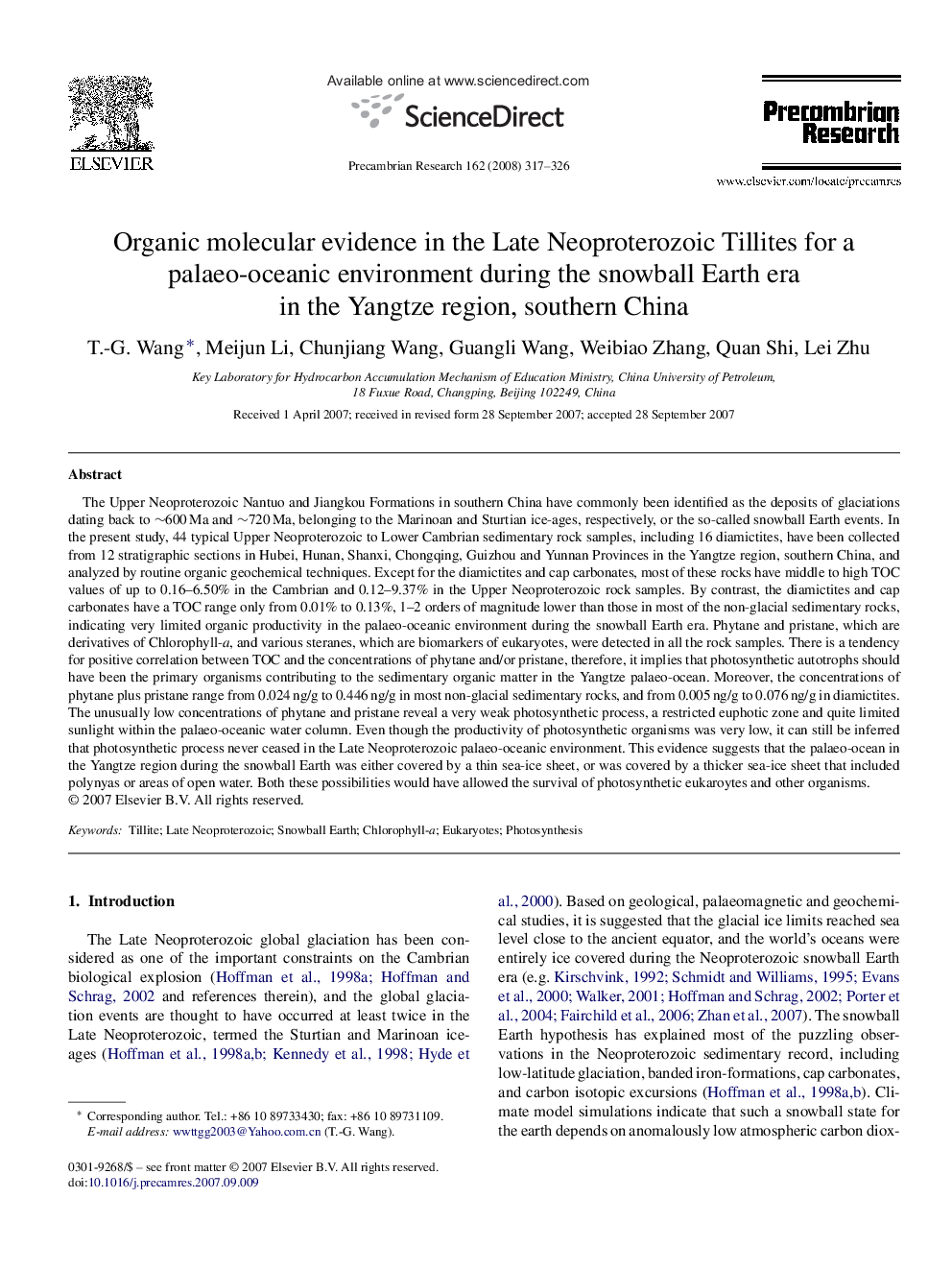| Article ID | Journal | Published Year | Pages | File Type |
|---|---|---|---|---|
| 4724405 | Precambrian Research | 2008 | 10 Pages |
The Upper Neoproterozoic Nantuo and Jiangkou Formations in southern China have commonly been identified as the deposits of glaciations dating back to ∼600 Ma and ∼720 Ma, belonging to the Marinoan and Sturtian ice-ages, respectively, or the so-called snowball Earth events. In the present study, 44 typical Upper Neoproterozoic to Lower Cambrian sedimentary rock samples, including 16 diamictites, have been collected from 12 stratigraphic sections in Hubei, Hunan, Shanxi, Chongqing, Guizhou and Yunnan Provinces in the Yangtze region, southern China, and analyzed by routine organic geochemical techniques. Except for the diamictites and cap carbonates, most of these rocks have middle to high TOC values of up to 0.16–6.50% in the Cambrian and 0.12–9.37% in the Upper Neoproterozoic rock samples. By contrast, the diamictites and cap carbonates have a TOC range only from 0.01% to 0.13%, 1–2 orders of magnitude lower than those in most of the non-glacial sedimentary rocks, indicating very limited organic productivity in the palaeo-oceanic environment during the snowball Earth era. Phytane and pristane, which are derivatives of Chlorophyll-a, and various steranes, which are biomarkers of eukaryotes, were detected in all the rock samples. There is a tendency for positive correlation between TOC and the concentrations of phytane and/or pristane, therefore, it implies that photosynthetic autotrophs should have been the primary organisms contributing to the sedimentary organic matter in the Yangtze palaeo-ocean. Moreover, the concentrations of phytane plus pristane range from 0.024 ng/g to 0.446 ng/g in most non-glacial sedimentary rocks, and from 0.005 ng/g to 0.076 ng/g in diamictites. The unusually low concentrations of phytane and pristane reveal a very weak photosynthetic process, a restricted euphotic zone and quite limited sunlight within the palaeo-oceanic water column. Even though the productivity of photosynthetic organisms was very low, it can still be inferred that photosynthetic process never ceased in the Late Neoproterozoic palaeo-oceanic environment. This evidence suggests that the palaeo-ocean in the Yangtze region during the snowball Earth was either covered by a thin sea-ice sheet, or was covered by a thicker sea-ice sheet that included polynyas or areas of open water. Both these possibilities would have allowed the survival of photosynthetic eukaroytes and other organisms.
